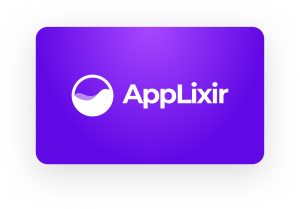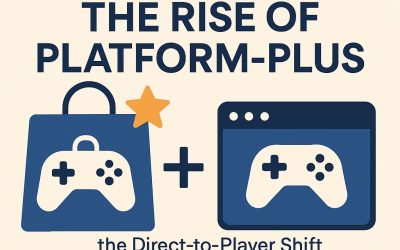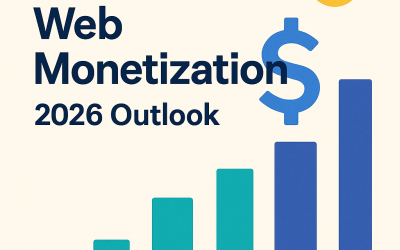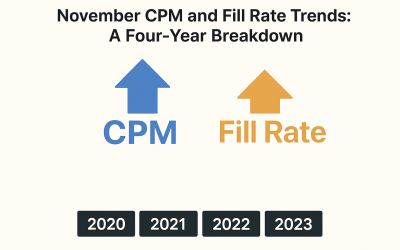Segmentation as an Ad Monetization Strategy: Moving Beyond One-Size-Fits-All
In the competitive landscape of web and mobile app monetization, publishers face a persistent challenge: how to maximize ad revenue without destroying the user experience that keeps people coming back. For years, the industry has wrestled with this tension, often treating it as an unavoidable trade-off. But what if the problem isn’t the ads themselves, but rather the assumption that all users should see them the same way?
Segmentation changes the equation by aligning ad experiences with user behavior. That can mean changing ad frequency, ad unit mix, or even the very moments when ads are triggered. For long-session players, ads may need to be carefully spaced to preserve retention. For short-session users, earlier monetization might be necessary to capture value before they churn. This isn’t about manipulation—it’s about respect. It’s about understanding that different users have different tolerance levels, different engagement patterns, and different relationships with your app.
Contents
The Fatal Flaw of Blanket Ad Strategies
Traditional ad monetization operates on a simple premise: show ads to everyone at roughly the same frequency, in the same formats, at the same triggers. It’s efficient from an implementation standpoint, requiring minimal complexity in your ad logic. But efficiency in code doesn’t translate to efficiency in revenue—or retention.
Consider what happens when you apply a universal ad strategy across your entire user base. Your most engaged users, the ones spending 30-45 minutes per session building intricate strategies or progressing through complex levels, get interrupted at the same rate as someone who opens your app for 3 minutes while waiting for their coffee. Your paying customers, who’ve already demonstrated their willingness to support your business, see the same ad load as free users who will never spend a dollar.
The result? You’re either under-monetizing users who would tolerate more ads, or you’re driving away high-value users who deserve better treatment. Often, you’re doing both simultaneously. Your average revenue per user (ARPU) suffers because you’re leaving money on the table with some segments while watching others churn before you capture their lifetime value.
Worse still, blanket strategies create frustration in the wrong places. A retention-focused player who encounters an interstitial at a critical gameplay moment might abandon your app entirely, costing you months of potential engagement and monetization. Meanwhile, a casual user who was about to churn anyway could have been shown additional rewarded ads or higher-value placements without any negative impact on retention—because there was no long-term retention to protect.
Understanding Your User Segments
Effective segmentation begins with identifying the distinct behavioral groups within your user base. While every app is different, most publishers will find variations of these core segments:
Retention-driven players are your marathon runners. They exhibit long session lengths, high frequency of return, and sustained engagement over weeks or months. These users have found genuine value in your app and represent the foundation of long-term business success. They’re often progressing through content, building collections, or developing skills within your app ecosystem. Their tolerance for ads exists, but it’s conditional—they’ll accept monetization as long as it doesn’t fundamentally disrupt the experience they’re enjoying.
For these users, the placement and timing of ads matters more than the raw frequency. An interstitial that appears at a natural break point—between levels, after completing a challenge, or during a transition screen—will be far more acceptable than one that interrupts active gameplay. These users may actually engage well with rewarded video ads when the rewards are meaningful to their progression. They’re not ad-averse; they’re disruption-averse.
Churn-prone users represent the opposite challenge. These are your sprint runners, characterized by short sessions, infrequent returns, and weak engagement signals. They might be new users still evaluating your app, casual visitors who stumbled upon your app through various acquisition channels, or users who found your app doesn’t quite meet their needs. The hard truth is that many of these users won’t be with you long regardless of your ad strategy.
This reality doesn’t make them worthless—far from it. But it does change the calculus. With churn-prone users, you’re in a race against time. Delaying monetization in hopes of building long-term retention often means missing the monetization window entirely. These users can and should be monetized more aggressively in their early sessions, front-loading ad impressions before they disappear from your active user base.
Paying users have already solved your monetization problem by opening their wallets. They’ve made in-app purchases, subscribed to premium features, or bought into your app’s economy with real money. These users are gold, not just for the immediate revenue they provide, but for what they represent: validation that your app offers sufficient value to justify payment.
Yet many publishers make the mistake of treating paying users identically to non-payers when it comes to ads. This is a missed opportunity for differentiation. Paying users have already demonstrated lower price sensitivity and higher commitment to your app. Showing them the same ad frequency as free users is like making first-class passengers board through the same crowded jetway as economy—technically functional, but strategically tone-deaf.
Ad-first users are perhaps the most interesting segment because they’re frequently overlooked. These users rarely or never make in-app purchases, but they engage extensively with rewarded ads. They’ll watch video after video if the rewards are worth it, treat rewarded ads as a core gameplay mechanic, and may actually seek out ad opportunities within your app. These users are often dismissed by publishers focused on IAP conversion, but they represent sustainable, scalable revenue. In many apps, particularly in casual games or utility apps, ad-first users can form the backbone of healthy ARPU. They’re low-maintenance, price-sensitive users who’ve found a way to enjoy your premium features without paying cash—and in doing so, they’re generating consistent ad revenue.
Tailoring Ad Experiences to Each Segment
Once you’ve identified your key segments, the real work begins: designing ad experiences that respect each group’s characteristics while maximizing monetization potential.
Optimizing for Retention-Driven Players
For your most engaged users, the goal is preserving the experience that keeps them coming back while capturing fair value from their attention. This means carefully spacing interstitials to avoid disruption during critical moments. If your retention data shows that users who complete five levels in a session are 3x more likely to return tomorrow, don’t risk that pattern by showing an interstitial after level three.
Instead, look for natural breathing points. Session end screens, victory moments, and content transitions are psychologically appropriate times for ads. Users are already in a mental state of completion or transition, making them more receptive to a brief interruption. Some of the most successful implementations treat these moments as rewards in themselves—”You’ve completed level 10! Here’s what’s next”—with the ad serving as a natural pause rather than an intrusion.
Rewarded video ads become particularly powerful with this segment when tied to meaningful progression. Rather than offering generic currency, consider rewards that accelerate the specific goals these engaged users are pursuing. Extra lives for a difficult level they’re stuck on, rare items for their collection, or boosts that help them compete with friends—these contextual rewards transform ads from interruptions into tools.
The frequency can also be dynamic based on session length. A user in their 40th minute of continuous play might be shown ads less frequently than in their first 10 minutes, acknowledging their deep engagement. Alternatively, you might increase rewarded ad availability during long sessions, giving engaged users more opportunities to voluntarily monetize while making progress.
Capturing Value from Churn-Prone Users
Users exhibiting weak retention signals require a fundamentally different approach. The data is clear: if someone has a 70% probability of never opening your app again after today, delaying monetization in hopes of building a relationship is leaving money on the table. This doesn’t mean creating a hostile experience. Rather, it means front-loading ad opportunities in the first few sessions when you still have the user’s attention. Show that first interstitial earlier than you would for retained users. Introduce rewarded ads prominently in the onboarding flow. Consider higher ad frequency in sessions 1-3 before retention patterns become clear.
The key is making these early impressions count without creating such a poor experience that you accelerate churn. This is where ad quality and relevance become critical. Churn-prone users who see well-targeted, high-quality ads for products they might actually want are less likely to have a negative experience than those who see generic, low-quality remnant inventory.
You can also use creative ad unit selection for this segment. Playable ads, which offer interactive previews of advertised apps, tend to perform well with users who are still exploring what your app offers. Banner ads, often dismissed as low-value, can actually work well for churn-prone users because they monetize without interrupting the evaluation process. Some publishers implement “graduated” strategies where users start with higher ad frequency and earn their way into lower-frequency tiers by demonstrating retention. This creates a natural evolution where users who stick around get rewarded with better experiences, while those who leave early still generate meaningful revenue.
Respecting Paying Users
Users who’ve made purchases deserve recognition for their contribution. The simplest approach is reducing overall ad frequency for paying users—show them 30-50% fewer ads than non-payers. This small change significantly improves their experience while having minimal revenue impact, since their IAP revenue typically far exceeds the lost ad revenue.
But you can go further. Consider removing interstitials entirely for paying users while keeping rewarded ads available. This respects their purchase by eliminating unwanted interruptions while leaving the door open for voluntary ad engagement when they want the rewards. Many paying users will still choose to watch rewarded ads for premium currency, rare items, or time-limited boosts—especially if they’re already invested in progression.
Another approach is creating exclusive rewarded ad opportunities for paying users. Offer them better exchange rates on rewarded ads (watch one ad for 2x the typical reward), access to premium rewarded ad placements that grant rare items, or special “VIP” rewarded ads that appear at convenient times without interrupting gameplay. The psychology here is powerful. Paying users don’t want to feel like suckers who bought something that freeloaders get for watching ads. But they’re often happy to use ads as a supplementary source of resources, particularly if it feels like a bonus rather than a requirement. By differentiating their ad experience, you’re sending a clear message: your purchase mattered, and we value your continued engagement.
Maximizing Ad-First Users
Ad-first users are often the most underestimated segment in mobile monetization. These users will never buy your $4.99 starter pack or subscribe to your monthly premium tier. But they will watch 10 rewarded ads in a single session if the rewards justify it, generating $0.30-$0.50 in ad revenue along the way.
For these users, rewarded ads should be abundant and prominent. Integrate them deeply into your economy and progression systems. Make them available for multiple purposes: currency, items, lives, time skips, gacha pulls, energy refills—anywhere a paying user might spend money, an ad-first user should be able to substitute their time and attention instead.
The best implementations make rewarded ads feel like strategy rather than desperation. Frame them as smart choices: “Watch an ad to double your rewards” or “Get an extra spin by watching this video.” This positioning transforms ads from something users endure into tools they leverage. You can also increase the frequency and prominence of rewarded ad offers for this segment. Show them opportunities earlier and more often. Use UI elements that highlight available rewarded ads. Send them notifications about limited-time rewarded ad opportunities. These users are telling you they prefer ads to payment—lean into that preference rather than fighting it.
Consider implementing a “VIP ad watcher” status that rewards users for consistent ad engagement. Unlock exclusive cosmetics, grant titles or badges, or provide special rewards for watching a certain number of ads. This gamifies ad viewing and creates status around being a dedicated ad-first user, turning what could be seen as “cheap” behavior into something the community recognizes positively.
Implementation Considerations
Moving from theory to practice requires thoughtful implementation. Start by instrumenting your analytics to capture the behavioral signals that define your segments. Track session lengths, session frequency, time between sessions, in-app purchase history, rewarded ad engagement rates, and progression speed. Use this data to score users and assign them to segments, updating these assignments as behavior evolves.
Your ad mediation platform becomes critical infrastructure. Modern mediation SDKs support dynamic ad configurations based on user parameters, allowing you to adjust frequency caps, ad unit priorities, and placement triggers per segment. Set up separate ad placements for different segments if needed, giving you granular control over what each group experiences.
Testing is essential. Implement your segmented strategies gradually, running A/B tests to validate that your assumptions translate to results. Watch for unintended consequences—are you accelerating churn in some segments? Leaving revenue on the table in others? Use holdout groups to measure incrementality and ensure your segmented approach truly outperforms your baseline.
Don’t set and forget. User behavior shifts over time as your app evolves, as market conditions change, and as your user base matures. Regularly review your segment definitions, ad performance by segment, and overall impact on key metrics. Be prepared to adjust your strategies quarterly or even monthly based on what the data tells you.
The Business Impact 
When implemented effectively, segmented ad monetization delivers measurable improvements across multiple dimensions. Publishers typically see 15-30% increases in overall ad revenue as they capture more value from under-monetized segments while protecting retention in high-value cohorts. Simultaneously, retention metrics often improve by 5-15% as the most engaged users experience fewer disruptive ads.
Perhaps most importantly, ARPU stabilizes and grows more predictably. By treating different user types differently, you’re building a diversified monetization base that’s less vulnerable to changes in any single segment’s behavior. When IAP conversion drops, your ad-first users keep revenue flowing. When ad rates fluctuate seasonally, your paying users provide stability.
The strategic advantage extends beyond immediate metrics. Apps with sophisticated segmentation can offer better deals to advertisers by ensuring ads reach receptive audiences at optimal moments. This improves fill rates, increases eCPMs, and makes your inventory more valuable in programmatic auctions.
Moving Forward – AppLixir Rewarded Video Ad
Segmentation as a monetization strategy isn’t about finding ways to show more ads to more people. It’s about showing the right ads to the right people at the right times. It’s about respecting that your user base isn’t homogeneous and that optimal monetization requires acknowledging this diversity.
The publishers who thrive in today’s competitive app ecosystem are those who move beyond one-size-fits-all thinking. They recognize that a retention-focused player and a churn-prone user shouldn’t have identical experiences. They understand that paying users deserve differentiation and that ad-first users represent legitimate, sustainable revenue.
By tailoring experiences to these groups, publishers don’t just increase revenue—they protect retention by avoiding a blanket strategy that frustrates the wrong users. They build more resilient businesses with diversified monetization and deeper understanding of their user base. Most importantly, they create better experiences that respect who their users are and how they want to engage.
In an industry often criticized for prioritizing monetization over user experience, segmentation offers a path forward that serves both goals. It’s not about choosing between revenue and retention. It’s about being smart enough to optimize for both, one segment at a time.



